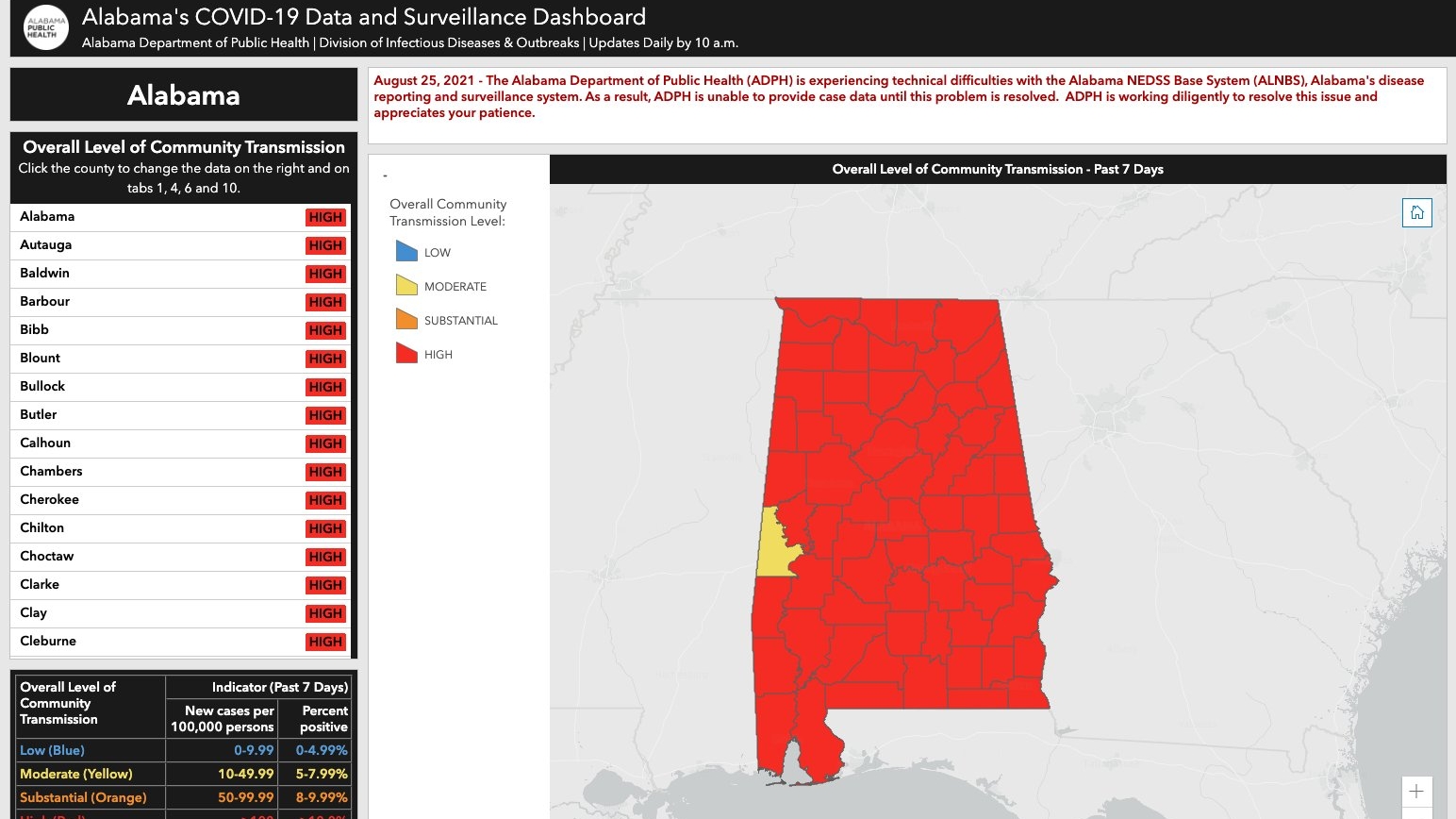Alabama’s COVID-19 case information was unclear Tuesday and Wednesday, due to what the Alabama Department of Public Health said were technical problems with the state’s disease reporting and surveillance system.
ADPH hasn’t updated the state’s numbers at least four times since July 20, citing similar technical problems.
ADPH’s COVID-19 dashboard on Wednesday said the department was unable to report case data because of “technical difficulties with the Alabama NEDSS Base System,” which stands for the National Electronic Disease Surveillance System, a nationwide system developed by the Centers for Disease Control and Prevention to help states manage data and report it to the CDC.
Because the issues go beyond the department’s public-facing dashboard and also include underlying data systems, it also affects other data trackers including APR‘s COVID-19 data dashboard.
The lack of up-to-date data comes as schools continue to send more students and staff home to quarantine due to COVID-19, and state hospitals are seeing a surge in COVID-19 patients, many of whom are younger and who are requiring more extensive care.
Alabama’s COVID-19 hospitalizations, which are reported on a separate system from the NEDSS Base System, have been updated daily, and on Tuesday showed that the state had 60 fewer ICU beds than patients who needed them.
There were 2,845 hospitalized statewide with COVID-19 on Wednesday, just 239 shy of Alabama’s record high hospitalizations, set on Jan. 11. Of those hospitalized, 84 percent were unvaccinated, according to the Alabama Hospital Association. There were 40 children hospitalized statewide with COVID-19 on Tuesday.
{{CODE1}}
Alabama’s seven-day average positivity rate for the week ending Sunday was 21.9 percent. Public health experts say that rate — which measures the percentage of tests that are positive — should be at or below 5 percent or cases are going undetected.





















































